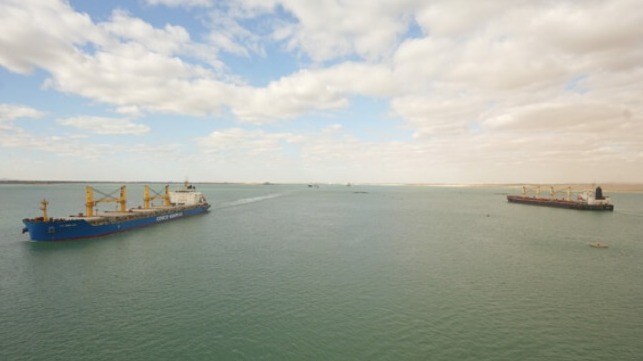Uncertainty Over Trump’s Vision for Gaza Could Delay Red Sea Return

Speculation continues within the different sectors of the shipping industry on when vessels might return to the Red Sea and the Suez Canal. The head of the Suez Canal Authority expressed an optimistic prediction of the end of the first quarter, while shipping companies such as Maersk had said the second half or even late 2025.
Analysts warn that much of the outlook depends on the second round of the peace talks due to start for Gaza. The first phase of the ceasefire has held with hostages held by Hamas and Palestinians detained by Israeli exchanged despite a general uneasiness before each exchange.
The Arab nations, however, were quick to denounce Donald Trump’s repeated statements that the United States would take ownership of Gaza and redevelop it as the “Riviera of the Middle East.” Trump repeated the comments to the media on Sunday, saying Palestinians would not be returned to Gaza but relocated to our countries, causing widespread concern of potential unrest and a collapse in the peace talks. Saudi Arabia has said there will be no peace without a Palestinian state. The Houthis threatened to renew their attacks if the ceasefire collapsed.
“A week ago, there was a light at the end of the tunnel,” commented Lars Jensen, CEO of Vespucci Maritime and a well-known industry analyst, told The Financial Times. He said, “The likelihood of a return to the Red Sea is reduced.”
Suez Canal Authority Chairman Osama Rabie, however, speaking on Egyptian TV, said he expected to continue to see a gradual return, reports Bloomberg. He said a level of normalcy could be reached by late March and a full recovery by mid-year. Bloomberg, however, reports no more than 32 ships a day are making the transit, half the record highs of 75 vessels. The Canal Authority has also taken steps to increase capacity, recently completing additional two-way traffic lanes in the southern reaches of the canal.
“Such a development is clearly contingent upon a positive development in the current negotiations related to the ceasefire in Gaza,” said Jensen. He pointed out that this Red Sea crisis has reached 448 days, with so far, few vessels having returned.
Last week, the Suez Canal Authority highlighted that a Liberian-registered tanker that was attacked last July made an uneventful transit of the Suez Canal, its first in more than eight months. They pointed to it as a sign of the gradual return that they are predicting.
Attendees at a Lloyd’s oil industry conference, however, continue to take a wait-and-see attitude. Barbara Harrison, vice president of crude supply and trading at Chevron, was quoted as saying the industry was waiting to see which ship would be first.
The managing partner of Energy Outlook Advisors, Anas Alhajji, took to social media on Sunday, February 9, to announce that the first LNG-laden carrier in about a year was crossing the Red Sea. He reported the Salalah LNG (145,500 cbm) was carrying Omani LNG. Built in 2005 and registered in Panama, the vessel is operated by Oman’s state-owned Asyad Shipping Company.
Media reports are speculating the LNG carrier is going to Turkey. The vessel’s operators appeared to be still cautious as no destination was displayed on its AIS, and instead, it had a message saying “armed guards onboard.”
